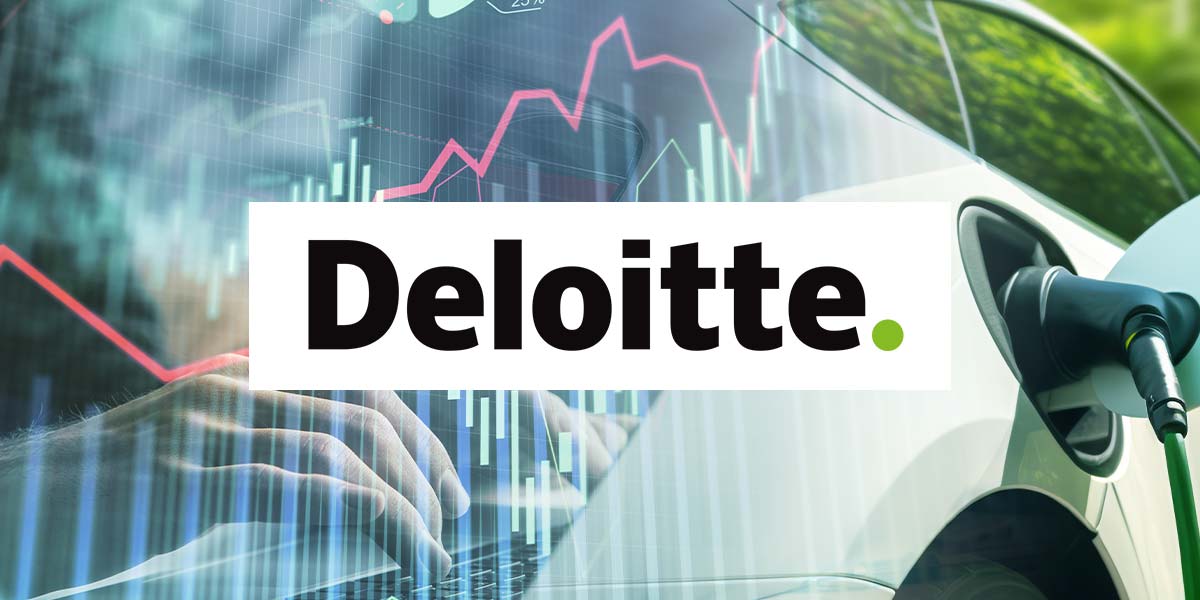Similar to other markets, Thailand’s automotive sector is facing the challenges of a VUCA (volatility, uncertainty, complexity and ambiguity). Despite the Thai government’s support, the EV market is experiencing a slowdown due to consumer concerns over price wars and maintenance experiences. Based on Deloitte’s Automotive Industry Trends, we will explore the context and uncover four key hidden potentials within OEMs (Original Equipment Manufacturers) and their value chain, providing insights into the evolving automotive landscape.
The Context: EV Slowdown – Challenges and Responses
Sales momentum for Electric Vehicles (EVs) is experiencing a slowdown worldwide, including in Thailand. Key factors contributing to this decline include unpredictable geopolitical developments, high levels of household debt, and an increasing loan rejection rate. In response, OEMs are intensifying the price competition by lowering prices and introducing more affordable models, which is impacting both incumbent players and the second-hand car market segment.
German and US OEMs are scaling back EV investments, reducing production, and cutting prices to remain competitive. They are focusing on hybrids as a transitional solution between Internal Combustion Engine (ICE) vehicles and fully electric models such as Extended Range Electric Vehicles (EREV). According to Deloitte’s 2025 Global Automotive Consumer Study, Thai customer preference shifted towards ICE and Plug-in Hybrid Electric Vehicle (PHEV) between 2024 and 2025, whilst the demand for Battery Electric Vehicle (BEV) remained stagnant.
Let us explore the four key potentials that Original Equipment Manufacturers (OEMs) are developing and consider how these innovations can effectively address and overcome the existing challenges.
1) Battery Technology: The Key to Affordability
Battery costs are a significant cost of EV production. Yet, they are still seen as the top offenders. Based on Deloitte’s 2025 Global Automotive Consumer Study, consumers’ primary concerns when purchasing BEVs are Driving Range and Charging Time.
In this context, advancements in battery technology are crucial. Lithium Iron Phosphate (LFP) batteries are gaining traction due to their lower costs, longer shelf life, and environmental benefits. Currently, LFP batteries hold about 30% of the market share compared to Nickel Manganese Cobalt (NMC) batteries, which dominate around 60%. However, LFP has shown a notable Compound Annual Growth Rate (CAGR) of about 15% since 2017. Chinese players are dominant in the LFP market, whereas Japanese, U.S., and Korean OEMs are embracing LFP technology to reduce costs and remain competitive in the marketplace.
Emerging alternatives, such as Sodium-Ion (Na-ion) batteries, are more affordable due to sodium’s abundance and lower cost compared to LFP. With a projected CAGR of about 13% from 2022 to 2028, Na-ion batteries offer OEMs with an opportunity to introduce more affordable entry-level models.
2) Innovative Charging Solutions
Advancements in charging technology are becoming essential to address consumer concerns about convenience and range. Wireless charging, which utilises electromagnetic induction, is emerging as a promising alternative to traditional plug-in systems. This innovation offers two key approaches:
Static Charging allows EVs to charge whilst parked over a designated pad embedded in the ground. Drivers can simply park their vehicles and walk away whilst the system automatically initiates charging.
Dynamic Charging takes innovation further by enabling vehicles to charge whilst driving over roads embedded with charging coils. This technology uses resonant inductive power transfer to deliver energy continuously as vehicles move along electrified road segments.
3) The Rise of EV Battery Recycling
As the adoption of EVs continues to grow, the market for EV battery recycling is positioned for strong growth. Multiple stakeholders are collaborating to establish a circular economy for End-Of-Life (EOL) batteries, utilising them for second-life applications or recycling to extract critical raw materials.
This approach helps OEMs meet regulatory requirements, qualify for tax credits, and reduce costs by using recycled materials, making EVs more affordable.
China and the European Union are at the forefront of battery recycling efforts. However, the global EOL battery value chain remains developing, and there is a need for more explicit stewardship responsibilities, particularly in Southeast Asia.
4) Unlocking Growth Opportunities with Connectivity
Connectivity enables new business models, enhances features, and creates innovative customer experiences, including:
Function on Demand (FoD): FoD services allow automakers to offer software-based features that customers can activate as needed, creating a personalised experience. A significant percentage of prospective buyers see FoD as a way to increase automaker earnings, and free trials for add-on features appeal to a large portion of consumers.
Advanced Driver Assistance Systems (ADAS): ADAS is reshaping vehicle safety standards whilst opening new revenue opportunities. Driven by regulatory mandates and safety concerns, the ADAS market is projected to grow at a CAGR of 16.7% between 2022 and 2027.
Generative Artificial Intelligence (Gen AI): Gen AI is poised to transform the automotive sector by improving production processes, enhancing vehicle performance, and advancing autonomous driving technologies. The Gen AI market in automotive is expected to grow at a CAGR of 24% between 2022 and 2032.
These technologies not only address consumer demands but also position OEMs for long-term success in a competitive market.
Conclusion: A Strategic Roadmap for Thailand’s EV Market
Despite current challenges, Thailand’s EV market holds significant potential for growth. By addressing consumer concerns over affordability, infrastructure, and sustainability through technological innovation, stakeholders can unlock new opportunities. Strategic investments in battery technology, charging solutions, recycling infrastructure, and connectivity will be crucial for maintaining momentum.
As Thailand continues to develop its EV ecosystem, collaboration between government bodies, OEMs, and private investors will be essential in positioning the country as a leader in Southeast Asia’s EV revolution. The journey ahead requires resilience and adaptability but promises a sustainable future for the automotive industry.





